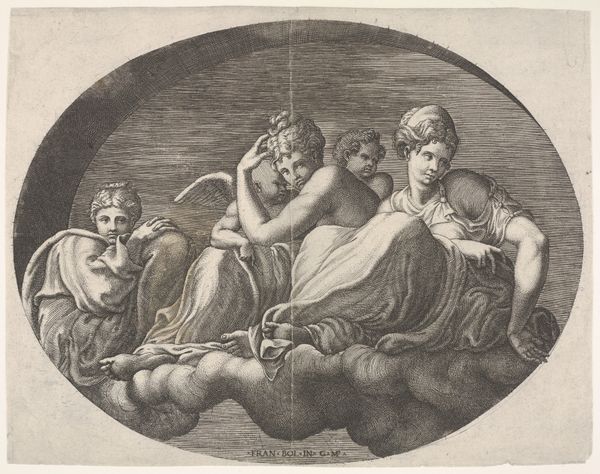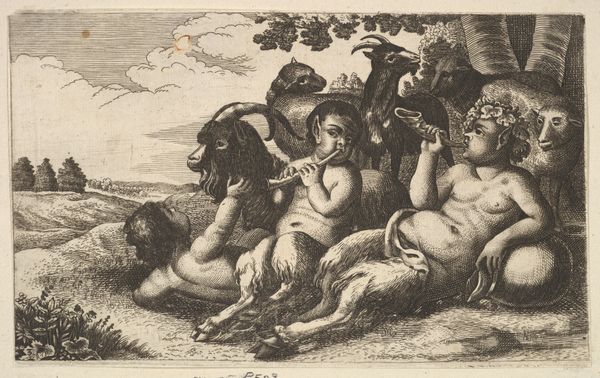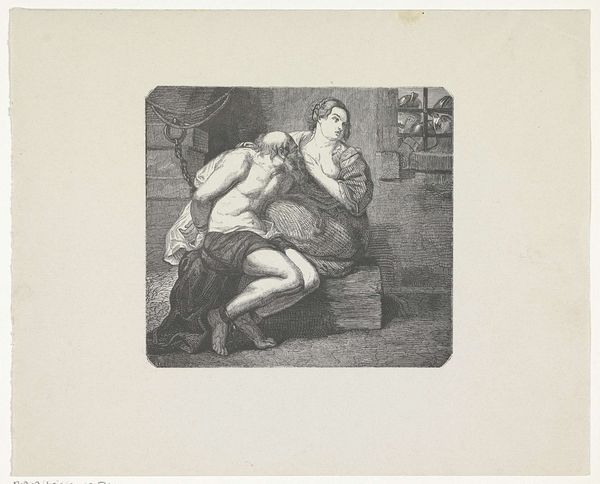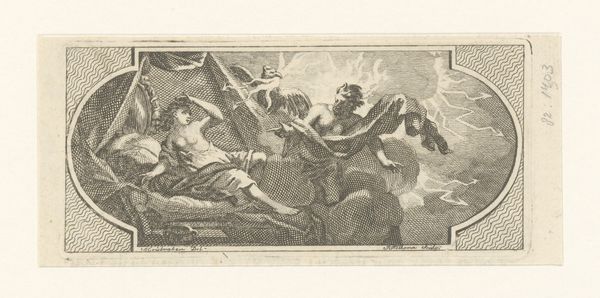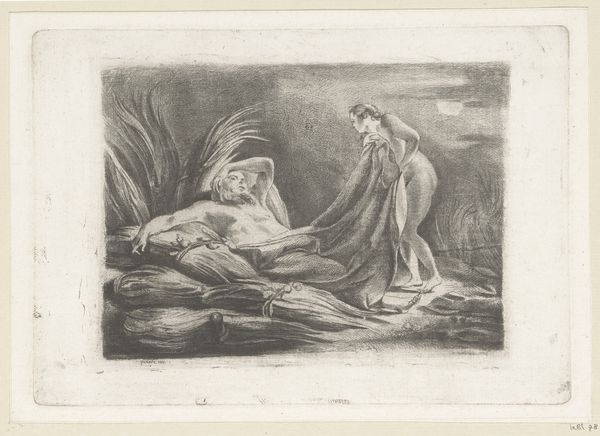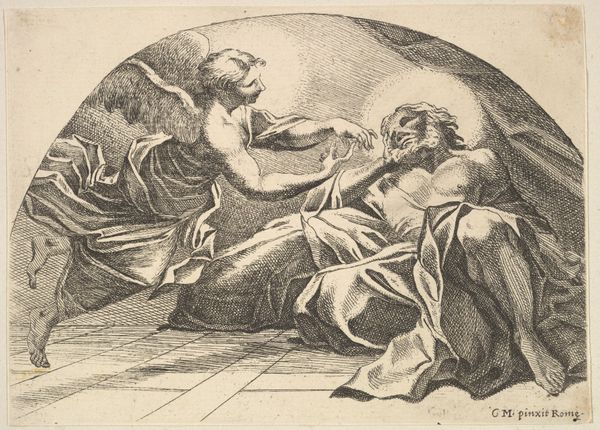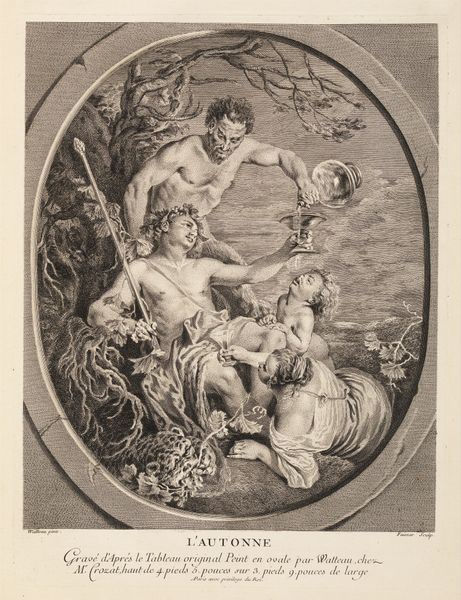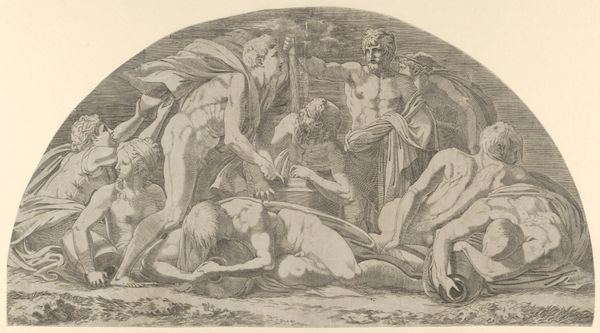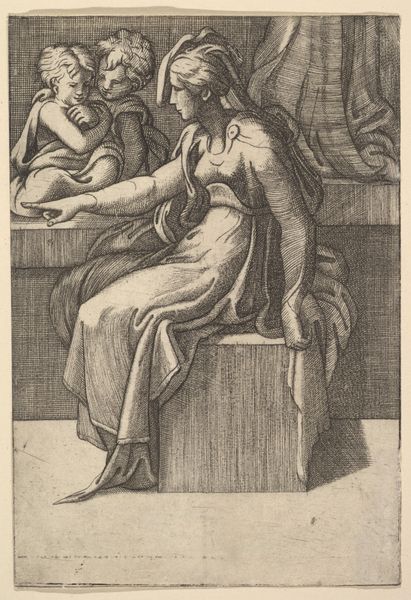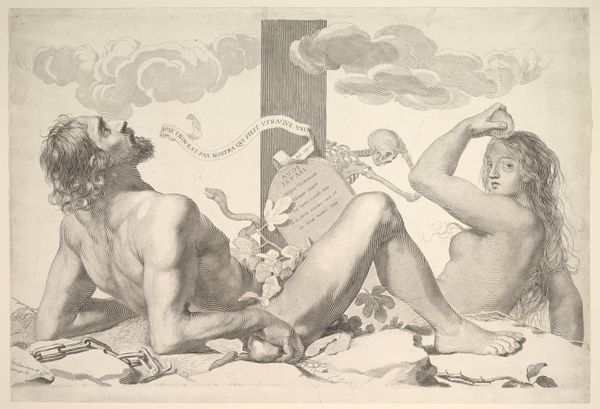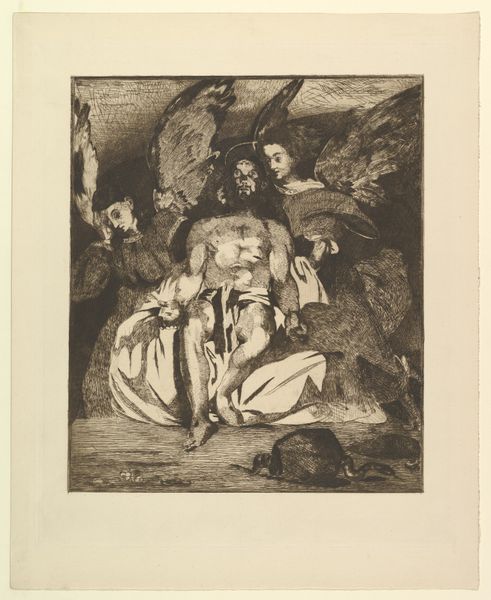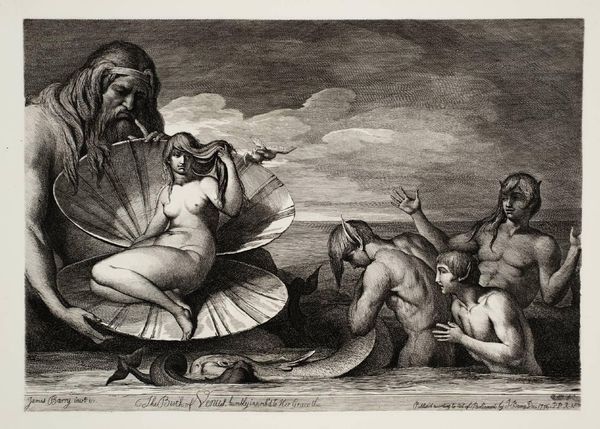
Pluto, Neptune, Minerva, and Apollo, from a series of eight compositions after Francesco Primaticcio's designs for the ceiling of the Ulysses Gallery (destroyed 1738–39) at Fontainebleau 1560s
0:00
0:00
drawing, print, engraving
#
drawing
#
allegory
# print
#
greek-and-roman-art
#
mannerism
#
figuration
#
history-painting
#
engraving
Dimensions: sheet: 6 15/16 x 9 1/4 in. (17.7 x 23.5 cm) trimmed to oval and laid down
Copyright: Public Domain
Editor: This engraving from the 1560s by Giorgio Ghisi is titled "Pluto, Neptune, Minerva, and Apollo." It’s based on designs for a ceiling at Fontainebleau, which is amazing. The figures are so intertwined, and it almost feels claustrophobic. How would you approach interpreting its visual qualities? Curator: The Mannerist style certainly lends itself to a study of form and spatial relationships. Note the exaggerated musculature and contorted poses—these are not mere representations of human anatomy but deliberate distortions intended to create a sense of dynamism. Consider also the tonal variations achieved through the engraving technique. Do these variations create a coherent composition? Editor: I think so. The darker lines do emphasize the figures’ outlines and the drapery folds, creating a sense of depth even within the oval format. But the way their limbs overlap can be disorienting. Is that a deliberate effect? Curator: Precisely. The ambiguity of form contributes to the intellectual playfulness characteristic of Mannerism. The artist prioritizes artifice and invention over naturalism. It asks us to appreciate the skill in rendering complex forms within a deliberately confusing arrangement. Does the interplay of light and shadow serve any other purpose, in your view? Editor: Maybe to highlight certain attributes? The trident, for example, is very clearly defined, helping identify Neptune. And that could be Minerva's helmet? The crispness contrasts with the softer modeling of the bodies. Curator: An astute observation. The sharpness of line serves a dual function: defining attributes and reinforcing the artificiality of the constructed space. This is not an attempt to create an illusionistic window onto the world but a celebration of the engraver's craft. Editor: I see that. Thinking about it that way really changes how I see the piece; it’s less about what the figures *mean* and more about *how* they're presented. Curator: Exactly, it is less a window and more a mirror reflecting the artist's virtuosity. An artist is at play, constantly reminding us of the hand involved in the image making. A perspective where formalism unveils deeper insight.
Comments
No comments
Be the first to comment and join the conversation on the ultimate creative platform.
